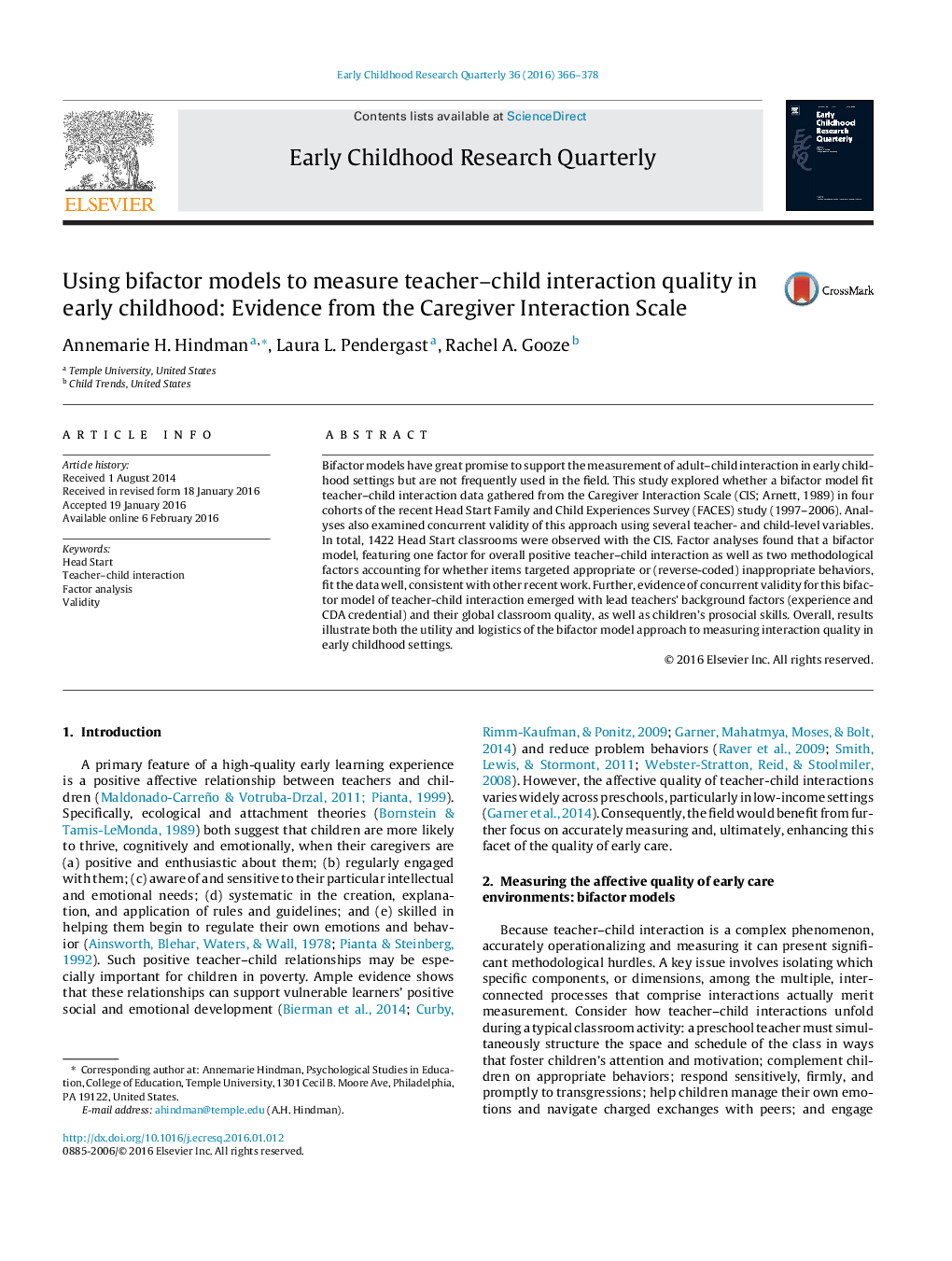| Article ID | Journal | Published Year | Pages | File Type |
|---|---|---|---|---|
| 353672 | Early Childhood Research Quarterly | 2016 | 13 Pages |
•We examined the factor structure and validity of the CIS scale.•A bifactor model accounting for item wording best fit the CIS data.•Concurrent validity emerged with teacher background variables.•Concurrent validity was apparent with classroom instructional quality.•Concurrent validity was discovered with child prosocial development.
Bifactor models have great promise to support the measurement of adult–child interaction in early childhood settings but are not frequently used in the field. This study explored whether a bifactor model fit teacher–child interaction data gathered from the Caregiver Interaction Scale (CIS; Arnett, 1989) in four cohorts of the recent Head Start Family and Child Experiences Survey (FACES) study (1997–2006). Analyses also examined concurrent validity of this approach using several teacher- and child-level variables. In total, 1422 Head Start classrooms were observed with the CIS. Factor analyses found that a bifactor model, featuring one factor for overall positive teacher–child interaction as well as two methodological factors accounting for whether items targeted appropriate or (reverse-coded) inappropriate behaviors, fit the data well, consistent with other recent work. Further, evidence of concurrent validity for this bifactor model of teacher-child interaction emerged with lead teachers’ background factors (experience and CDA credential) and their global classroom quality, as well as children’s prosocial skills. Overall, results illustrate both the utility and logistics of the bifactor model approach to measuring interaction quality in early childhood settings.
